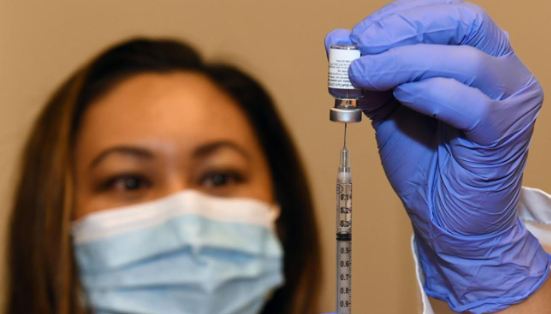Understand the Do’s and Don’ts of the two-dose coronavirus vaccination regimen
If you’ve already received your first dose of a two-dose COVID-19 vaccine, congratulations — you’re well on your way to being protected from the coronavirus. But to be fully immunized, it’s critical to get that second shot.
Across the country, some people are running into snafus as they try to get their second dose. Winter storms have shut down clinics in some areas, while others have closed because they temporarily ran out of vaccine. There are also scattered reports of scheduling glitches.
If you’ve had an appointment canceled, don’t wait for someone to call you — be proactive about rescheduling your second shot, advises William Schaffner, M.D., an infectious diseases specialist at Vanderbilt University Medical Center in Nashville, Tennessee, and medical director of the National Foundation for Infectious Diseases.
“We have told everyone these vaccines are 95 percent effective,” he says of the two-dose Moderna and Pfizer-BioNTech vaccines currently in use in the U.S. “But they’re only 95 percent effective if you indeed get that second dose.”
Here are a few more things to know about the second dose:
- Your side effects will likely be stronger
Many people who had little to no reaction to the first vaccine dose are reporting that the second one packs a punch — surprising even those who study vaccines for a living.
Greg Poland, M.D., an infectious disease expert at the Mayo Clinic in Rochester, Minnesota, and director of Mayo’s vaccine research group, had only mild symptoms after his first dose. But the second one left him shaking — literally — with chills and a temperature of 101.
“I took one Tylenol and went to bed and woke up the next morning 90 percent improved, and by mid-day I was back to normal,” Poland says. “This is not an indication of something going wrong; it is an indication of a vigorous immune response.”
There is no live virus in the vaccine, so you can’t get COVID-19 from being vaccinated.
Participants in clinical trials of both vaccines had experiences similar to Poland’s. In Pfizer’s clinical trial, for instance, 31 percent of participants ages 18 to 55 reported a fever after the second dose, compared to only 8 percent after the first one. Fatigue, chills, headache and muscle/joint pain were also more common after the second injection for both vaccines.
The good news is, older adults were less likely to experience vaccine reactions, the data shows. Among those age 55 and up in the Pfizer trial, 22 percent experienced fever after the second dose, and 3 percent had a temperature after the first dose.
Schaffner recommends not making any big plans for the day after your scheduled vaccine appointment.
- You should avoid taking pain relievers before your shot
If you’ve been hearing stories about second-dose side effects, you may be tempted to take a pain reliever before your appointment.
That’s not a good idea, according to the U.S. Centers for Disease Control and Prevention (CDC), unless you’ve been advised to do so by your doctor. Pain relievers taken preemptively ahead of a shot could dampen the effectiveness of the vaccine, Poland and Schaffner say.
However, it’s OK to take acetaminophen (Tylenol) or a nonsteroidal anti-inflammatory drug like Advil or Motrin after your vaccine to treat side effects such as pain, fever, chills or headache.
- The timing between doses doesn’t need to be exact
The second dose of the Pfizer shot is supposed to be given 21 days after the first; for Moderna, the recommended interval between doses is 28 days.
However, if you can’t get an appointment on the exact day — or if you have to miss your scheduled appointment for some reason — the CDC does allow some wiggle room. Although the agency recommends trying to stick to the suggested interval, it says the second dose can be given up to six weeks after the first.
If your appointment is scheduled earlier than the recommended date, ask for a later appointment, Schaffner advises. “Your immune response will work perfectly well if you take more time,” he says. “But if you do it too early, the second dose may not invoke an optimal response.”
- Your second dose should be from the same manufacturer as your first
Doctors are already hearing from patients asking if they can get their second dose from a different manufacturer, often because they realize the other type of vaccine is offered at a location that’s more convenient. But the CDC recommends against it: The Moderna and Pfizer vaccines “are not interchangeable with each other or with other COVID-19 vaccine products,” the CDC says. “The safety and efficacy of a mixed-product series have not been evaluated.”
The CDC does allow the mixing of Pfizer and Moderna shots in “exceptional situations,” such as when the vaccine used for someone’s first dose is no longer available due to a supply shortage, or if it’s unclear which vaccine they got for their first dose.
- A rash at the injection site isn’t a reason to skip your second dose
If you experienced a rash at the injection site three to 10 days after getting your first shot, that doesn’t preclude you from getting your second shot, the CDC says, although it recommends getting it in the other arm.
A small number of people have developed such rashes, sometimes called “COVID arm,” after vaccination. Doctors say it’s likely a mild allergic reaction that can be treated with an over-the-counter antihistamine such as Benadryl.
In guidance released Feb. 10, the CDC says the reaction is not believed to represent a risk for a more severe allergic reaction when you get your second dose.
- You should temporarily avoid all other vaccines
It might be time for your shingles or Tdap vaccine, but you should hold off if you are between COVID-19 vaccine doses. Because there’s no data on the safety and efficacy of COVID vaccines administered at the same time as other vaccines, the CDC recommends avoiding other immunizations in the two weeks before and after both doses. Holding off also helps prevent confusion about the cause of a reaction if you experience one.
The CDC does allow exceptions in circumstances where avoiding the vaccine would put you at risk, such as a tetanus shot after a wound or a hepatitis shot during an outbreak.
- Full immunity is not immediate
It takes two weeks after your second dose for your body to build full protection to the virus. After that, you should have almost zero chance of developing severe disease if you are exposed to someone with COVID-19, Schaffner says. The CDC also says you no longer have to quarantine if you’re exposed to someone with COVID-19 — as long as you meet these criteria: you don’t have symptoms and it hasn’t been more than three months since your second vaccine dose.
One possible exception is immune-compromised people, Schaffner says. They will get some level of immunity, he says, “but they may not reach the 95 percent because their immune system is already somewhat compromised, no matter how strong these vaccines are.”
- You still need to wear a mask
Experts are divided about whether it’s OK to hug your grandchild or gather socially with other vaccinated people after you’re fully immunized.
But they agree you should continue to wear a mask and practice social distancing in public. For one thing, there’s a small chance you could get sick even after you’ve been vaccinated.
In addition, it’s possible that you could still carry the virus and silently transmit it to others who haven’t been vaccinated, even if you don’t develop symptoms.
And there’s one more reason. Until the country reaches herd immunity — the point when a significant portion of the population becomes immune to a disease — it’s important for everyone to wear a mask to stop the spread of the virus, Schaffner says. “If we have some people walking around mask-less and others not, people left and right are just going to discard their masks,” he says. “We are not ready yet for that for society. Let’s all stick to masks a little longer until we get the all clear.”







